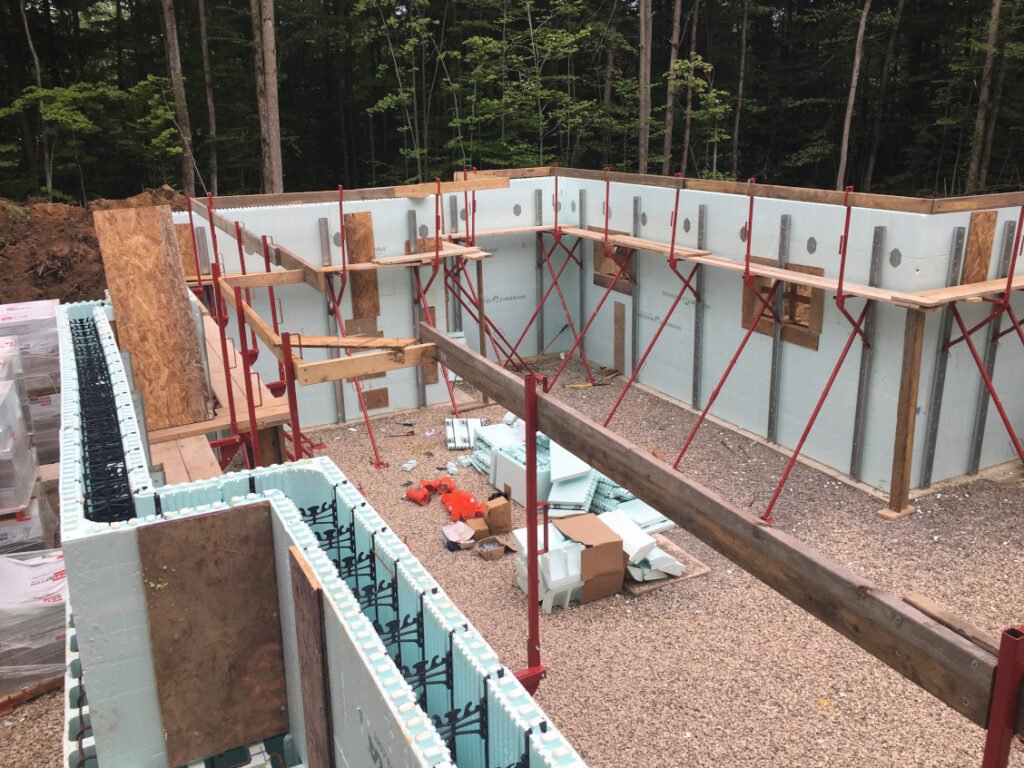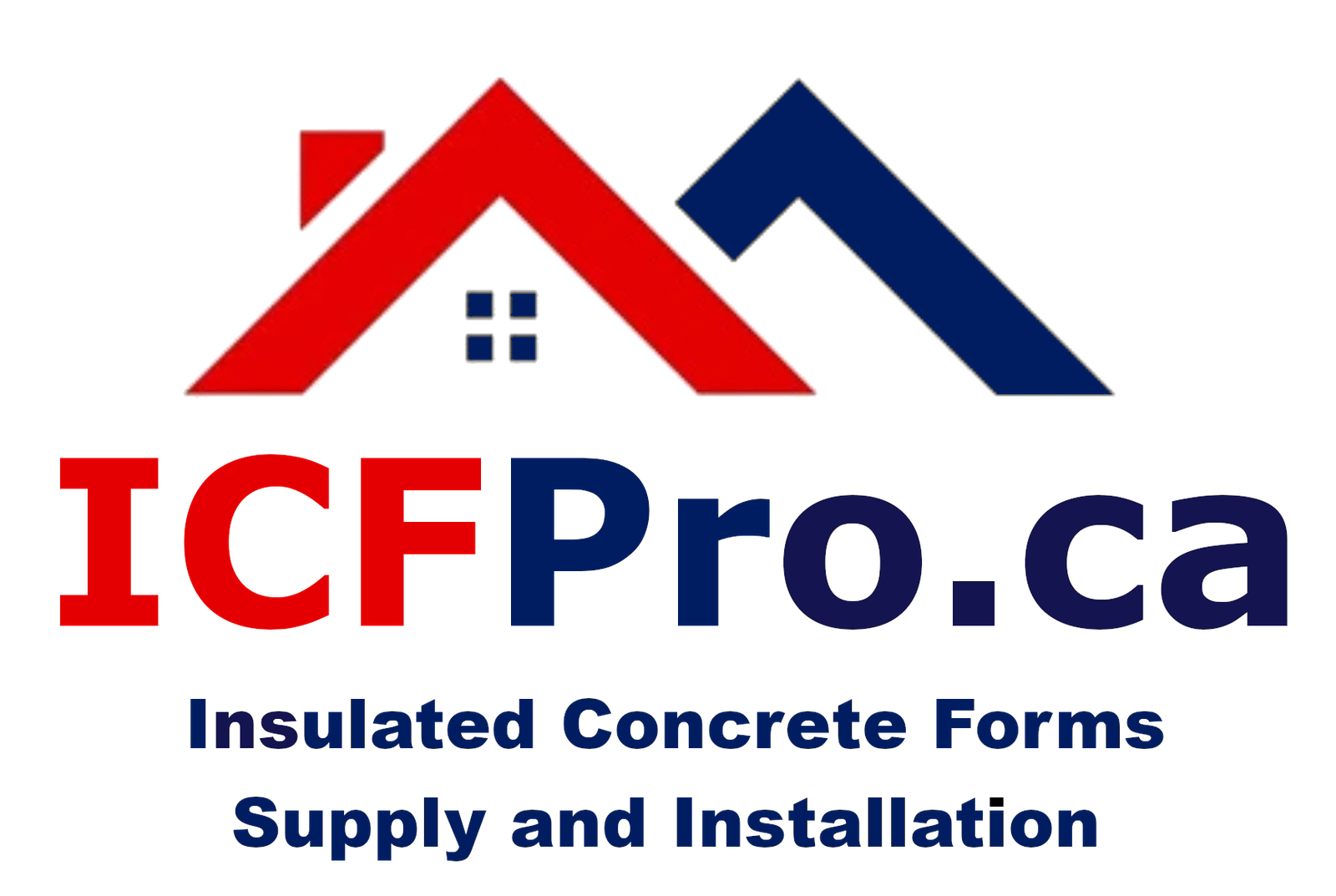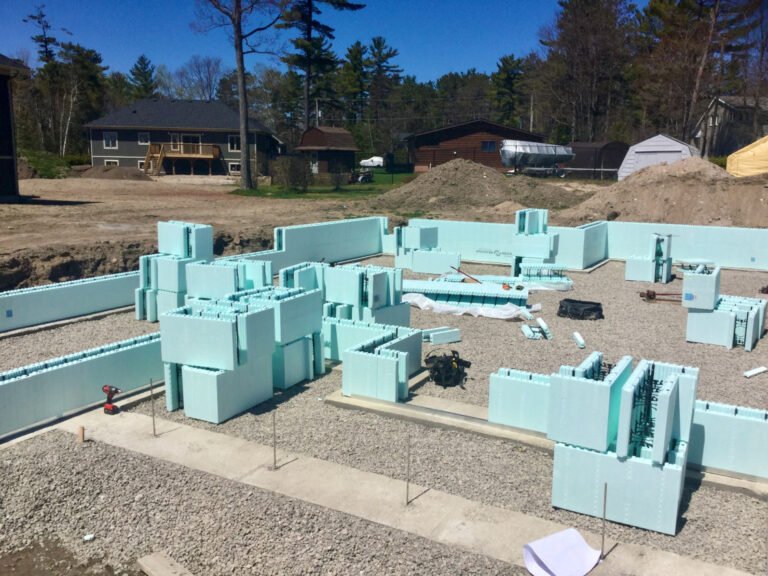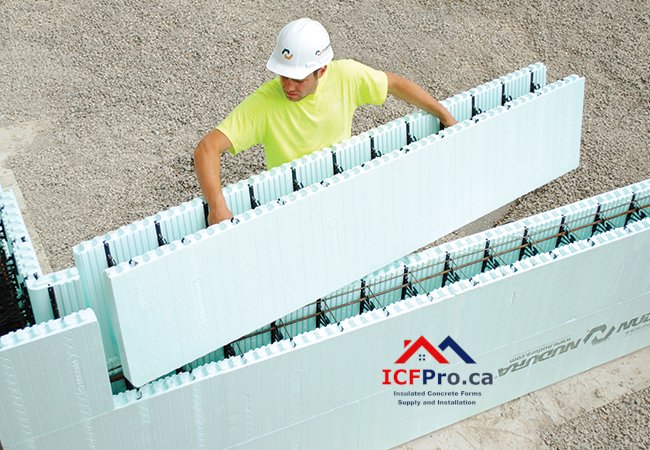ICFPro.ca is a division of ICFhome.ca - Phone 1 866 868-6606 - Direct Line 1 705 533-1633 - Email: info@icfhome.ca
ICF Forms for Basements

ICF Forms for Basements: Turn Your Underground Space into the Home’s Favorite Hangout
Picture this: Your basement isn’t just a storage dungeon for holiday decorations and forgotten treadmills. Instead, it’s the coziest room in the house—warm in winter, cool in summer, and so quiet you can hear your own heartbeat. Now imagine that even if the rest of your home is stick-framed, this basement becomes the family’s go-to spot for movie nights, workouts, and wine cellars. That’s the power of ICF forms for basements. But here’s the kicker: If your basement is this good, why stop there? Let’s explore why ICF basements outshine traditional builds—and why your entire house deserves the ICF treatment.
The ICF Basement Advantage: More Than Just Flood Defense
ICF (Insulated Concrete Form) basements aren’t just dry—they’re underground oases that outperform traditional builds in three key ways:
- Thermal Comfort: With built-in R-20+ insulation and concrete’s thermal mass, ICF basements stay 68°F year-round, even if your furnace takes a snow day.
- Soundproofing: Block out upstairs chaos (teenage drum solos, barking dogs) with 90% noise reduction.
- Air Quality: No mold, no dust, no musty “basement smell”—just air fresher than a mountain breeze.
Real-World Secret: Homeowners with ICF basements and wood-framed first floors often joke that they “live downstairs.” The basement becomes the favorite retreat—warm, quiet, and immune to the drafts and creaks of traditional upper floors.
ICF Forms for Basements: Specialized Tools for Underground Dominance
Basements face unique foes: hydrostatic pressure, frost heave, and Radon gas. Standard ICF blocks won’t cut it. Here’s the gear you need:
1. Heavy-Duty EPS Blocks
- Density: 2.5–3.0 lb/ft³ (denser than your average ICF wall).
- Purpose: Resists soil pressure—no bowing, even in clay-heavy soil.
- Top Picks: Logix Platinum, Nudura’s ArmorLite.
2. Integrated Drainage Systems
- Built-In Dimple Mats: Redirect groundwater away from walls.
- Sloped Footing Forms: Channel water to drains before it seeps in.
3. Radon-Ready Kits
- Features: Pre-installed vapor barriers + sub-slab pipes for gas venting.
4. Steel-Backed Window Bucks
- No Leaks: Galvanized steel frames for basement egress windows.
Why Your Basement Becomes the Heart of the Home
Even if your first floor is stick-framed, an ICF basement steals the show:
- Winter Wins: While upstairs rooms battle drafts, the basement stays toasty. Perfect for home theaters or guest suites.
- Summer Sanctuary: Concrete’s thermal mass keeps it cool without AC. Move over, living room—the basement’s the new lounge.
- Noise Nirvana: Host a band practice downstairs without disturbing Zoom calls upstairs.
Case Study: A Michigan family built an ICF basement under their wood-frame farmhouse. Result? Their teens moved the Xbox, mini-fridge, and beanbags downstairs—and never came up.
The Irony of Mixing ICF Basements with Wood Framing
Why settle for a “good enough” upstairs? Here’s the problem:
- Energy Leaks: Wood-framed first floors hemorrhage heat, forcing your basement’s HVAC to overcompensate.
- Noise Pollution: Footsteps, creaks, and clatters from above disrupt basement tranquility.
- Missed Savings: You’ve already invested in ICF’s efficiency—why not maximize it?
Pro Tip: Pair an ICF basement with ICF first-floor walls. Your entire home becomes a silent, efficient fortress.
Building an ICF Basement: Step-by-Step
1. Excavate with Room to Breathe
- Dig 3–4 feet wider than the footprint. ICF blocks are bulky—you’ll need space to work.
2. Pour Bulletproof Footings
- Use 24”-wide footings to offset soil pressure. Embed radiant heating tubes here for warm floors.
3. Stack Like a Pro
- Interlock blocks tightly—no gaps. Use corner braces to keep walls plumb.
4. Pour Concrete with Precision
- Opt for 4,000 PSI concrete with a 6” slump. Pour in 4-foot lifts to avoid foam blowouts.
5. Waterproof Like a Spy
- Exterior: Peel-and-stick membrane (e.g., Grace Bituthene®).
- Interior: Vapor-barrier paint on exposed foam.
ICF Basement vs. Traditional: The Ultimate Showdown
| Factor | ICF Basement | Poured Concrete |
|---|---|---|
| Comfort | Year-round coziness 🛋️ | Damp and chilly 🥶 |
| Energy Bills | 40–50% lower 💸 | Basement HVAC struggles ❄️ |
| Resale Value | “Storm-ready” premium 🏷️ | “Needs work” discount 🚩 |
Verdict: ICF basements turn liability into luxury.
Why Stop at the Basement? The Case for Whole-House ICF
If your basement is the home’s favorite room, imagine an entire ICF house:
- Uniform Comfort: No more temperature swings between floors.
- Total Silence: Say goodbye to creaky floors and street noise.
- Disaster Resistance: From basement to attic, your home defies storms, fires, and termites.
Cost Reality: Building the whole house with ICF adds just 5–10% upfront but pays back in energy savings, insurance discounts, and resale value.
Conclusion: Don’t Just Build a Basement—Build a Legacy
ICF forms for basements aren’t just about keeping water out—they’re about creating a space so comfortable, durable, and quiet that it becomes the soul of your home. But why limit that magic to underground? If your basement is the family’s favorite retreat, imagine an entire house that’s equally inviting, efficient, and unshakable.
Final Pitch: Build your basement with ICF. Then keep going. Your future self—warm, dry, and stress-free—will thank you.
Final Word: An ICF basement is the ultimate “try before you buy” for whole-house ICF. Once you experience underground perfection, you’ll never go back. 🏠✨



